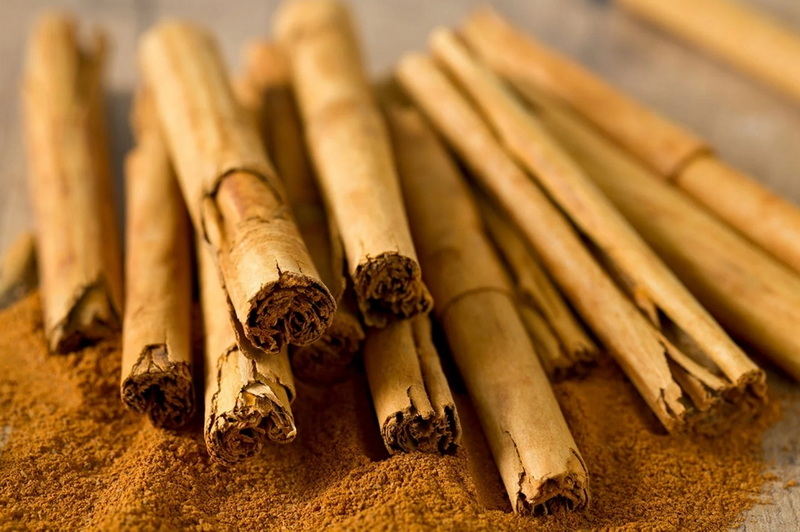Content Menu
● Introduction to Cinnamon and Its Extracts
>> Natural vs. Artificial Extracts
● Production of Artificial Cinnamon Bark Extracts
● Safety Considerations
● Health Impacts of Artificial Cinnamon Bark Extracts
● Regulatory Framework
● Consumer Awareness and Choices
● Future Research Directions
● Conclusion
● FAQ
>> 1. What is the main difference between natural and artificial cinnamon bark extracts?
>> 2. Are artificial cinnamon bark extracts regulated by food safety authorities?
>> 3. Can artificial cinnamon bark extracts cause health issues?
>> 4. How do I ensure the safety of artificial cinnamon bark extracts?
>> 5. Are there any alternatives to artificial cinnamon bark extracts?
● Citations:
Cinnamon, a spice derived from the bark of the cinnamon tree, has been widely used for centuries in both culinary and medicinal contexts. Its natural form is generally recognized as safe when consumed in typical food amounts. However, with advancements in technology, artificial cinnamon bark extracts have emerged, raising questions about their safety for consumption. This article delves into the safety aspects of artificial cinnamon bark extracts, exploring their production, potential health impacts, and regulatory considerations.

Introduction to Cinnamon and Its Extracts
Cinnamon is known for its warm, sweet flavor and aroma, making it a staple in many cuisines. There are two main types of cinnamon: Ceylon cinnamon (Cinnamomum verum) and Cassia cinnamon (Cinnamomum aromaticum), with the latter being more commonly used due to its stronger flavor and lower cost.
Natural vs. Artificial Extracts
- Natural Cinnamon Extracts: These are derived directly from cinnamon bark through processes like solvent extraction or steam distillation. Natural extracts are generally considered safe when used in food quantities.
- Artificial Cinnamon Bark Extracts: These are synthesized or created through chemical processes to mimic the flavor and aroma of natural cinnamon. The safety of artificial extracts can vary based on their composition and production methods.
Production of Artificial Cinnamon Bark Extracts
Artificial cinnamon bark extracts are produced using various chemical compounds that replicate the flavor and aroma of natural cinnamon. The most common compound used is cinnamaldehyde, which is responsible for cinnamon's distinctive taste and smell. However, the synthesis process and additional ingredients used can affect the extract's safety.
Safety Considerations
The safety of artificial cinnamon bark extracts depends on several factors:
1. Chemical Composition: The presence of certain chemicals, such as coumarin, can pose health risks. Coumarin is known to cause liver damage in high doses, especially in individuals with pre-existing liver conditions.
2. Regulatory Compliance: Ensuring that artificial extracts comply with food safety regulations is crucial. In the U.S., the FDA regulates food additives, including flavorings like cinnamon extracts.
3. Toxicity Studies: While natural cinnamon extracts have been studied for toxicity, artificial extracts may require separate assessments to ensure they do not pose unique risks.

Health Impacts of Artificial Cinnamon Bark Extracts
The health impacts of artificial cinnamon bark extracts can vary based on their composition and individual tolerance. Common concerns include:
- Allergic Reactions: Some individuals may experience allergic reactions to artificial flavorings, including those used in cinnamon extracts.
- Digestive Issues: Artificial additives can sometimes cause gastrointestinal discomfort in sensitive individuals.
- Long-term Effects: There is limited research on the long-term effects of consuming artificial cinnamon extracts. Continuous consumption may lead to unforeseen health issues, especially if the extracts contain harmful chemicals.
Regulatory Framework
Regulations regarding artificial flavorings, including cinnamon extracts, vary by country. In the U.S., the FDA oversees the use of food additives, ensuring they meet safety standards. However, the exact composition of artificial extracts may not always be disclosed, making it difficult for consumers to assess safety.
Consumer Awareness and Choices
Consumers have the power to make informed choices about the products they use. Here are some tips for choosing safer alternatives:
- Read Labels: Always check the ingredient list for artificial additives.
- Choose Natural Options: Opt for natural cinnamon extracts or whole cinnamon sticks when possible.
- Support Transparent Manufacturers: Look for companies that disclose the composition of their artificial extracts.
Future Research Directions
Further research is needed to fully understand the safety and long-term effects of artificial cinnamon bark extracts. This includes:
- Toxicity Studies: Conducting comprehensive toxicity studies to identify potential health risks.
- Regulatory Updates: Ensuring regulatory frameworks keep pace with advancements in food technology.
- Consumer Education: Educating consumers about the differences between natural and artificial extracts and their potential health impacts.
Conclusion
Artificial cinnamon bark extracts can be safe for consumption if they are produced with safe ingredients and comply with regulatory standards. However, consumers should be aware of potential health risks, especially if they have sensitivities or allergies. Further research is needed to fully understand the long-term effects of artificial cinnamon extracts.

FAQ
1. What is the main difference between natural and artificial cinnamon bark extracts?
The main difference lies in their origin and production process. Natural extracts are derived directly from cinnamon bark, while artificial extracts are synthesized to mimic the flavor and aroma of natural cinnamon.
2. Are artificial cinnamon bark extracts regulated by food safety authorities?
Yes, artificial cinnamon bark extracts are regulated by food safety authorities like the FDA in the U.S. However, the exact composition may not always be disclosed.
3. Can artificial cinnamon bark extracts cause health issues?
Yes, they can cause health issues, especially in individuals with sensitivities or allergies. Common concerns include allergic reactions and digestive issues.
4. How do I ensure the safety of artificial cinnamon bark extracts?
To ensure safety, look for products from reputable manufacturers that comply with food safety regulations. Also, be aware of any allergies or sensitivities you may have.
5. Are there any alternatives to artificial cinnamon bark extracts?
Yes, natural cinnamon extracts or whole cinnamon sticks are alternatives that are generally considered safe when used in typical food quantities.
Citations:
[1] https://www.ijbbb.org/vol5/392-B020.pdf
[2] https://pmc.ncbi.nlm.nih.gov/articles/PMC8491196/
[3] https://patents.google.com/patent/CN107496269A/en
[4] https://www.nccih.nih.gov/health/cinnamon
[5] https://pmc.ncbi.nlm.nih.gov/articles/PMC8804376/
[6] https://pmc.ncbi.nlm.nih.gov/articles/PMC9602362/
[7] https://www.drugs.com/npp/cinnamon.html
[8] https://www.mdpi.com/2072-666X/14/10/1819
[9] https://www.mdpi.com/2076-3417/12/3/1284






























